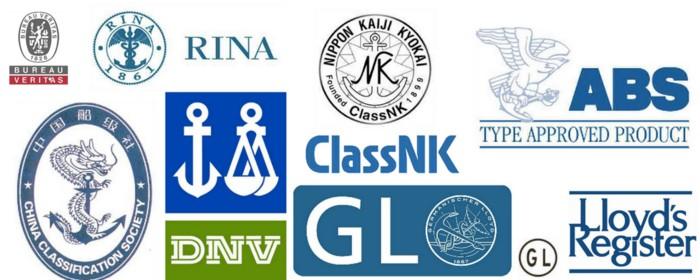Amine curing agents for ordinary temperature cured epoxy coatings can be divided into reactive curing agents and catalytic curing agents. Among them, reactive curing agents commonly used for ordinary temperature cured epoxy coatings include the following:
1、 Aliphatic polyamines
Such as ethylenediamine, diethylenetriamine, triethylenetetramine, tetraethylenepentamine, hexanediamine, polyethylenepolyamine, and so on.
Characteristics of fatty amine curing agents
(1) High activity, can cure at ordinary temperature.
(2) Intense reaction and heat release, with a short shelf life;
(3) Generally, post curing is required. Curing at ordinary temperature for about 7 days, followed by 2 hours/80~100 ℃ for better performance;
(4) The thermal deformation temperature of the cured material is relatively low, generally ranging from 80 to 90 ℃;
(5) The brittleness of the solidified material is relatively high;
(6) Volatility and toxicity are high.
Therefore, they are usually not directly used as curing agents for coatings, but rather modified by introducing new molecular structures through addition or condensation reactions.
2、 Alicyclic polyamines
Alicyclic amines are amine compounds with a molecular structure containing an alicyclic ring (cyclohexyl, hetero oxygen, nitrogen atom six membered ring). Most of them are low viscosity liquids, with a longer shelf life than fatty amines. The color and gloss of the cured product are better than those of fatty amines and polyamides; Medium temperature curing, high price, good transparency, good weather resistance, and high mechanical strength of the cured material; The modified product can be cured at ordinary temperature.
The most common is isophorone diamine (alicyclic amine). However, they are usually not directly used as curing agents for coatings, but rather modified by introducing new molecular structures through addition or condensation reactions.
3、 Aromatic polyamines
M-phenylenediamine
Meta phenylenediamine
4,4 'diaminodiphenylmethane (DDM)
4,4 'diaminodiphenylsulfone (DDS)
The characteristics of aromatic polyamine curing agents:
Advantages: The cured material has better heat resistance, chemical resistance, and mechanical strength than aliphatic polyamines. (Molecules containing one or more benzene rings)
Disadvantages: (1) Low activity, mostly requiring heating and curing.
Reason: Compared with aliphatic polyamines, the electron cloud density on nitrogen atoms is reduced, which weakens alkalinity, and there is also a steric hindrance effect on the benzene ring;
(2) Most of them are solid, with a high melting point and poor processability.
Aromatic amines cannot be directly used as ordinary temperature curing agents for coatings, but can be used as curing agents for intermediate coatings after liquefaction. For example, aromatic polyamines react with monoglycidyl ether to form liquid adducts. Such as 590, T-31, H-113 curing agents, etc.
4、 Polyamide
It is formed by the condensation of dimeric vegetable oil fatty acids and fatty amines, such as the dimerization reaction between 9,11-linoleic acid and 9,12-linoleic acid, followed by acylation reaction with 2 molecules of DETA.
The characteristics of polyamide curing agents
(1) Very low volatility and toxicity;
(2) Good compatibility with EP;
(3) The requirements for chemical stoichiometry are not strict, and the dosage can vary between 40 and 100 phr;
(4) Has a good toughening effect on cured materials;
(5) Low exothermic effect and long applicability period.
Disadvantages: The cured material has low heat resistance, poor chemical and solvent resistance, high viscosity, low curing reaction activity, and poor low-temperature curing ability. If necessary, it can be used in combination with other high activity curing agents or added with accelerators.
5、 Polyether amines
Polyether amine (PEA): It is a type of polymer with a polyether structure as the main chain and an amine group as the terminal active functional group. End amino polyether has the following structure: x, y=0- n. Polyether amine is obtained by amination of amine curing agent alcohol copolymers of polyethylene glycol, polypropylene glycol, or ethylene glycol/propylene glycol ordinary temperature cured epoxy coatings under high temperature and pressure. By selecting different polyoxoalkyl structures, a series of properties such as reactivity, toughness, viscosity, and hydrophilicity of polyether amines can be adjusted, and amine groups provide the possibility for polyether amines to react with various compounds. Its unique molecular structure endows polyether amines with excellent comprehensive properties. Currently, commercial polyether amines include a series of products with single functional, bifunctional, and tri functional molecular weights ranging from 230 to 5000. It has been widely used in many fields such as polyurea spraying, large-scale composite material manufacturing, and epoxy resin curing agents.
End amino polyether has low viscosity, colorless, good compatibility with epoxy resin, long applicability, and high adhesive strength. The exothermic temperature of end group polyether cured epoxy resin decreases, and the product is colorless, transparent, high gloss, tough, and heat-resistant to impact. End amino polyether has a high boiling point, low vapor pressure, low toxicity, and potential irritation to the skin.
6、 Phenolic amines
It is prepared by Mannich reaction of different organic amine curing agents with phenols and formaldehyde. Phenolic amine curing agent has low viscosity and high activity, and can be used at low or ordinary temperature. The heat resistance and strength of its solidified material decrease, while the toughness increases. Among them, phenolic amine curing agents based on cashew phenols are the most well-known among coating engineers.
7、 Amide Amines
Amide amine is synthesized by the addition of polyamines and fatty acids. Simultaneously possessing the characteristics of fatty amines and polyamides. Amide based amines have the rapid curing properties of fatty amines, good water resistance and corrosion resistance, as well as longer operational time and good flexibility similar to polyamides. The smaller molecular weight of amide amine ensures the low viscosity of the product, while ensuring a longer operational time, and the later curing time (with higher hardness and shear strength) is relatively short.
The main characteristics of amide amine are as follows:
1. Lower viscosity for easy operation
2. Good compatibility with resin
3. Long operational time, with 1-3 hours of operational time at ordinary temperature (200g, 25 ℃)
4. Short curing time, curing time of 1.5-4.5 hours at ordinary temperature (200g, 25 ℃)
5. Wet surface curing, good curing condition on a base surface without open water
6. Lower heating temperature, generally below 65 ℃ (200g, 25 ℃)
7. The cured material has excellent physical properties, high tensile, compressive, bending, shear and other properties.
8. The cured material has excellent resistance to water, acid, and alkali chemicals.
9. Excellent adhesion
10. Excellent glossiness
11. Good flexibility
Based on its excellent curing properties on wet surfaces, amide amines can be used to produce low surface treatment epoxy coatings.






